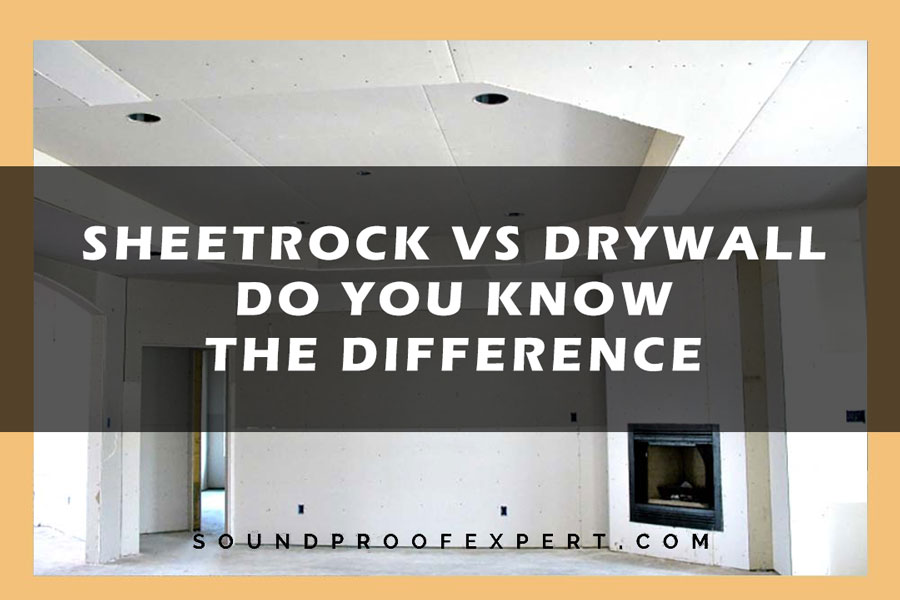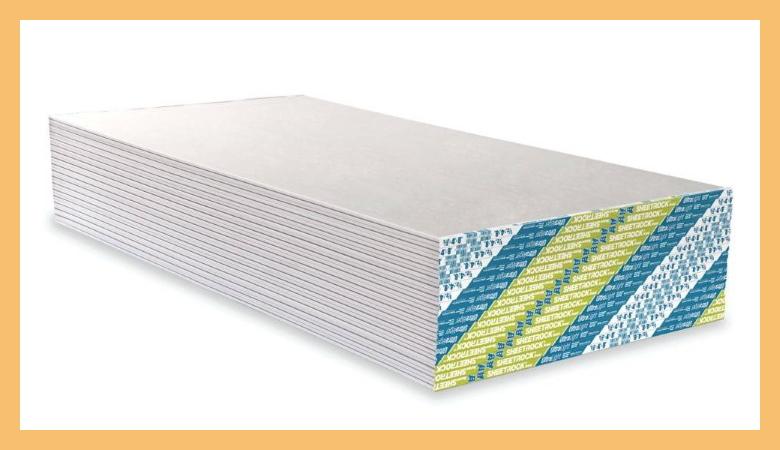
Whether you’re in the process of renovating your home, trying to soundproof a specific room, or building something new altogether, you’ll need to decide on an interior wall solution soon enough.
Drywall is the most obvious choice but you’ve likely heard about sheetrock as well, with the two being long-standing popular choices.
So, what’s the difference between sheetrock and drywall?
The truth is, there is no difference between sheetrock and drywall, as sheetrock is simply a specific brand of drywall.
Although the product differs from other types of drywall, they both do the same thing and are an inexpensive and easy way to build an interior wall.
To get the bottom of the differences between sheetrock and drywall, we’ve dived deeper into what each of them brings to the table, as well as their soundproofing abilities. With our comparison, you’ll see how they stack up, as well as the pros and cons that these panels can bring to your next project.
What is Drywall?
Drywall is an all-encompassing term to describe a panel of gypsum plaster that has been covered with paper.
Common names for drywall include plasterboard, gypsum board, sheetrock, and wallboard, all of which mean roughly the same thing but with slight variations.
The standard sizes of drywall are measured by the thickness of its panels, usually ranging from ¼ inch to ¾ inch. They come in different styles including moisture-resistant, mold-resistant, and fire-resistant panels.
In terms of soundproofing, drywall can be made with wood fibers to help manage acoustics and it can also feature polymers to reduce sound. Whatever purpose you have for drywall, there’s bound to be a specific type of brand that best suits, especially when it comes to soundproofing space.
What is Sheetrock?

Sheetrock is a type of drywall and a trademarked brand that’s owned and manufactured by the US Gypsum Company.
When most people hear the name sheetrock, they know that it’s drywall, and it’s often used interchangeably even if another brand has made it.
Sheetrock also comes with many variations including panels made for soundproofing rooms or those that can protect against moisture and mold. Their soundproofing panels are made with higher density gypsum plaster and can be applied to individual rooms of your home, or used through it entirely.
Builders will often put sheetrock on their ceilings as well because it’s both lightweight and prevents sagging, which is two key features when to look for when remodeling your ceiling. There are ceiling-specific panels you can use for better results and lots of other options in the sheetrock range.
The History of These Walls
If you’ve ever done a home renovation before or spoken to someone who has, you’ve likely heard the name sheetrock and drywall being used interchangeably.
When drywall was first invented, over 100 years ago, it was called Sackett Board, named after its inventor, and as improvements were made and different versions were released, the name changed as well.
Drywall was coined as the term to describe these panels and it described a simple layer of basic plaster sandwiched in between layers of wool felt.
U.S Gypsum Company took this idea and altered it, instead of using gypsum plaster for a more durable finish, and named it “Sheetrock”, which is now a registered trademark.
Sheetrock rose to fame during World War II and is still used by builders and renovators everywhere today. In modern times, sheetrock and drywall are used as interchangeable terms, much like you would call a tissue a Kleenex and vice versa.
Sheetrock is simply a type of drywall but can be used to describe it in general, and both names are instantly recognizable as the same thing, with similar advantages and disadvantages.
The installation process is the same as well, and you’ll find this is true with most types of drywall. The panels are cut to size and fixed onto the wall or ceiling joists, the seals are covered, and then it’s finished off as you choose.
Regardless of the brand you choose, this ease of installation is one of its most popular traits.
Their Pros and Cons

As a specific brand of drywall, sheetrock comes with many of the same basic pros and cons.
Here’s a little more to consider when looking at drywall for your next DIY project, room renovation, or new build so you can see if it’s right for you.
Pros
- Installing these panels is easy and quick, even for people without experience working with drywall before, and it only takes a few hours.
- Drywall and sheetrock are an inexpensive option for wall coverings while still having good value and leaving the room with a professional finish.
- There are options to upgrade to materials like fire-resistant, soundproof, and moisture-resistant products or stick with the most basic style that’s still effective.
Cons
- When used on their own, a basic type of sheetrock or drywall isn’t as effective at soundproofing as some other types and may require two layers or a more expensive option that’s made to resist sound.
- Ruin from moisture is more prominent with these panels so if any water damage happens at home, you’ll be looking at a total replacement.
A Solid Solution for Your Home
Drywall and sheetrock are among the two most common wall coverings for a home’s interior, but they may need some extra padding or a more expensive option if you’re using them for a soundproofing solution.
As a base though, they have a lot to offer, and they make an affordable choice that will deliver long-term results in your next home project.
Related Questions

As an interior wall, sheetrock and drywall are solid choices, but for soundproofing, you might need to go a little further to get the results you’re after.
If you’ve been thinking about using drywall panels in your next build or renovation, read on to see the answers to some commonly asked questions about it.
Is Drywall More Soundproof Than Plywood?
Drywall is rated better in terms of soundproofing than plywood, so makes a smarter option for covering walls if you want to muffle sounds. This is because sound travels faster and easier through the wood so choosing a wall covering with a larger mass, like drywall, will wield better results.
Does Thicker Drywall Help With Sound?
Choosing thicker drywall can help muffle sound more effectively but it’s not always a guarantee, so it’s better to choose a drywall panel that’s been made for soundproofing. Brands like QuietRock and Sheetrock make specific types of drywall that have been designed to block or muffle the sound.
Otherwise, you can choose a drywall option with a thickness of 5/8” or more for the best results, or think about installing an extra layer.
Can You Install Two Layers of Drywall?
It is possible to install two layers on drywall by laying the panels over each other, provided you are willing to put in the work. Some of the benefits of this include better soundproofing and insulation in the chosen room, but it takes extra effort to install and costs double the usual amount.
If soundproofing is your goal though, just one layer of sound-resistant drywall would be best.
Resources
